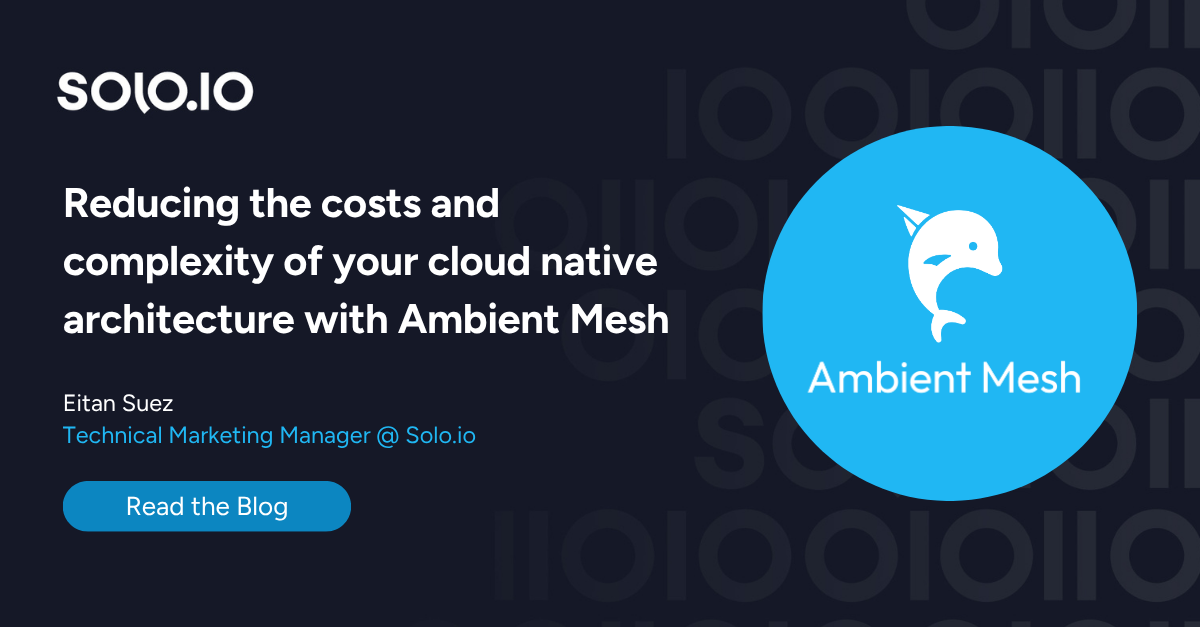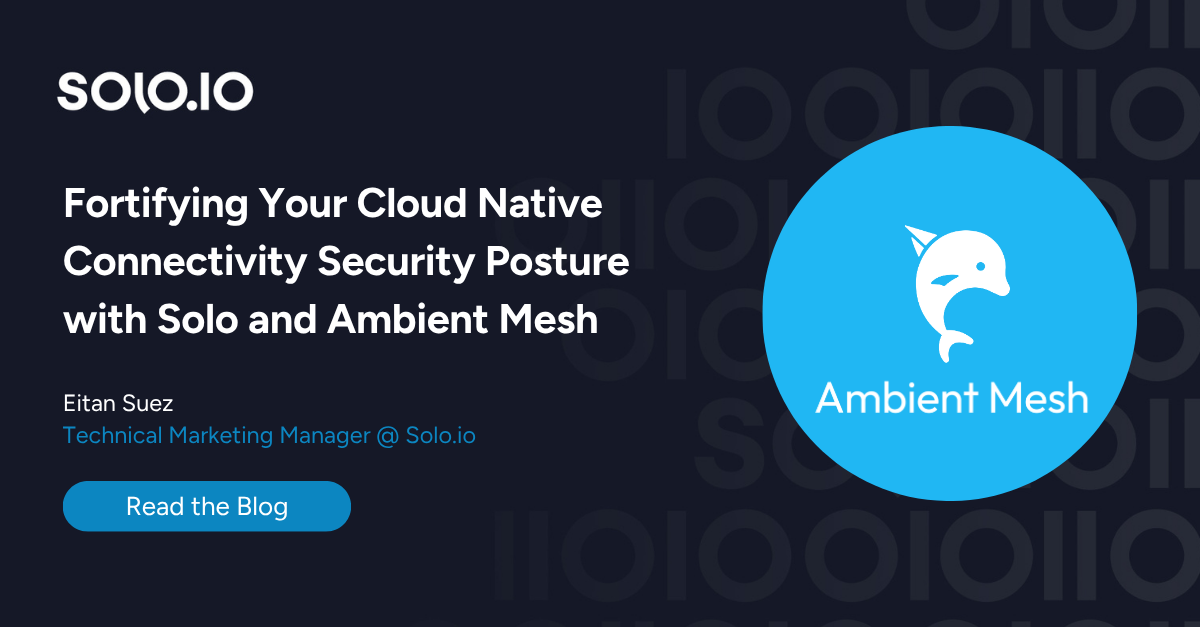Simplified Operations, Faster Time to Innovation & Increased Security
Cloud-native architectures have become the backbone of modern infrastructure, allowing for maximum agility and scalability. Service meshes, a dedicated infrastructure layer, play a critical role in unifying communications between applications, services and workloads. Yet the time and resources required to enroll services in a mesh has been a barrier to adoption for some organizations.
Ambient Mesh offers a simplified service mesh: by eliminating sidecars, costs can be reduced by up to 92%, while accelerating time-to-value for enterprises.
Faster Time to Innovation
Because Ambient Mesh is non-intrusive, teams can mesh-enable workloads in minutes—no code changes or pod restarts needed for most controls. This supports rapid experimentation (canary, blue-green, A/B testing) and instant rollout of security policies, helping organizations ship features faster and safer. No more “restart races” during upgrades or configuration changes.
Zero Trust Security
Ambient Mesh applies zero-trust networking at scale: automatic mTLS encryption and fine-grained access controls are enforced at the infrastructure layer. Layer 7 security (authorization, rate limiting) is added only where advanced controls are needed, minimizing resource use.
Ambient Mesh 101
Ambient Mesh is a sidecarless service mesh architecture, pioneered by Istio and Solo.io. Instead of attaching a proxy (sidecar) to every workload, Ambient Mesh leverages node-level components (“ztunnels”) for transparent Layer 4 (L4) security and connectivity, and adds Layer 7 (L7) “waypoint proxies” only where needed. This split-proxy model means:
- No more sidecar bloat—no per-pod proxy maintenance
- Centralized policy and observability
- Lightweight, zero-downtime mesh enablement: opt-in by labeling namespaces, no app/pod restarts for most operations
- Incremental adoption: sidecar and ambient modes can co-exist during migration
Migrating to Ambient Mesh: A Playbook
In this five-part blog series, experts share key considerations of migrating to Ambient Mesh:
Part 1: Everything you need to know: Get started by learning how Ambient Mesh revolutionizes service mesh architecture
Part 2: Discover the operational differences between sidecar mode and ambient mode
Part 3: Get a deep dive on the security and policy benefits of Ambient Mesh
Part 4: Learn about the benefits of Istio’s traffic management features
Part 5: Learn how Ambient Mesh impacts observability
Advanced Tips: Integrations and Scaling
- Co-existence: Run sidecar and ambient workloads together during migration to minimize disruption
- Declarative Policy: Use GitOps and policy-as-code for consistent, auditable configuration management
- Centralized Management: Solo.io’s Gloo Mesh provides a single pane of glass for policy, security, and observability across clusters and clouds
For more tips, see the Gloo Mesh documentation.
Conclusion
Ambient Mesh delivers simplicity and security without the baggage of sidecars. Whether an organization's goal is to cut costs, accelerate releases or achieve zero-trust at scale, this next-generation architecture unlocks new possibilities.


























%20a%20Bad%20Idea.png)











%20For%20More%20Dependable%20Humans.png)











